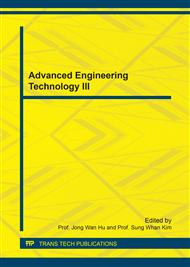p.217
p.224
p.233
p.239
p.247
p.253
p.259
p.263
p.270
Theoretical and Numerical Calculation on the Added Mass of Ahmed Body
Abstract:
Because of the added mass, the aerodynamic drag of the automobile will increase obviously when accelerating in the still air. In this paper, it firstly gave the definition of the added mass, and presented that there was little research on the calculation of the added mass of automobile. Then through the analysis of the theoretical calculation method for the added mass, it pointed out that, for the added mass of the car-body with a complex shape, there was much difficulty in the theoretical calculation. Alternatively, a numerical calculation method for the added mass of car-body was derived. The simulation model adopted the Ahmed body and the corresponding verification experiment was completed in the Tongji Automotive Wind Tunnel center. The results indicate that the added mass is a constant which is only dependent on the body-shape. For the model investigated, the added mass is 0.0052kg that is approximately equal to the air displaced by the car-body. As the body accelerates to 4m/s2, the aerodynamic drag is increased by 1.89% because of added mass. Therefore, it needs to pay more attention to the impact that the added mass has on the dynamic performance of vehicle when proceeding the aerodynamic designs (especially for the high power performance vehicles). Meanwhile, it still makes a correction to the conventional aerodynamic drag formula. This paper also demonstrates that, with the analysis of the flow-field of car-body, the added mass essentially stems from the additionally work done by the car-body to increase the kinetic energy of external fluid as it speeds up.
Info:
Periodical:
Pages:
247-252
Citation:
Online since:
June 2017
Authors:
Keywords:
Price:
Сopyright:
© 2017 Trans Tech Publications Ltd. All Rights Reserved
Share:
Citation:


